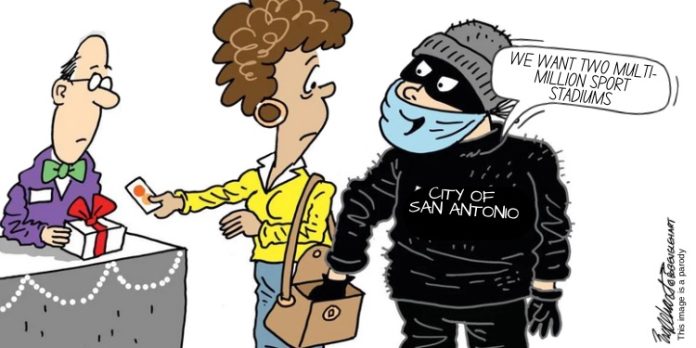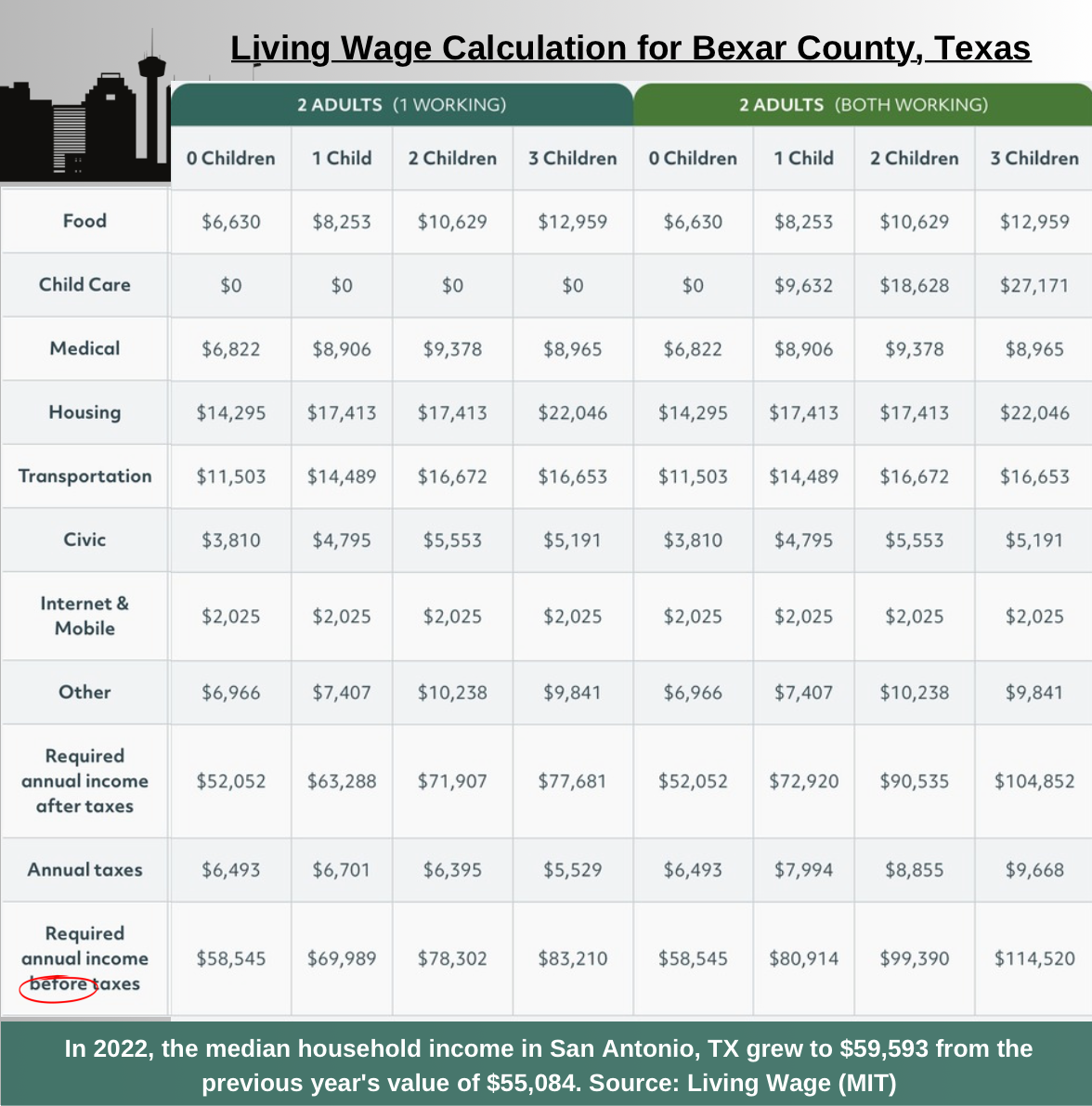San Antonio Residents Feel the Squeeze as Costs Rise and City Leaders Demand More, See Bexar County Living Wages Below
San Antonio, once a city that prided itself on its affordable living and tight-knit community, is now facing a financial squeeze from all sides. From increased utility bills to proposed tax hikes and pay raises for city officials, residents find themselves stretched thinner than ever, with little relief.
City Staples Close, Neighborhoods Suffer
Over the past few years, San Antonio has seen many beloved local attractions and restaurants close their doors. Icons like the Pig Stand, Splashtown, Lulu’s Bakery, Downtown Ripley attractions, Earl Abel’s, Acadiana Cafe, and many more have permanently closed, leaving gaps in the community and economic challenges for the neighborhoods that relied on these businesses. This doesn’t help when city officials have been talking with the Spurs for at least the last year and a half about relocating the team’s home court from the Frost Bank Center on the East Side to the University of Texas at San Antonio’s Institute of Texan Cultures property at Hemisfair.
These closures are not just about losing favorite hangouts and dining spots or upgrading stadiums—they signal a broader message about the city’s cultural fabric and the economic strain on the middle class trying to keep up with its developments.
Big Ticket Projects: Rumored Downtown Spurs Arena and New Multi-million Baseball Stadium
The city is discussing a new downtown arena for the Spurs and already gave the ‘go’ on a $160 million baseball stadium for the San Antonio Missions. The proposed Spurs arena would be the city’s third, following the Alamodome and Frost Bank Center, raising concerns that East Side neighborhoods near the existing arenas will be neglected (they will be). While the baseball stadium is promoted as a boost for economic growth, critics argue these projects mainly benefit the elite, driving up downtown costs and alienating working-class residents. The idea of living, working, and playing downtown is about to be obsolete.
Who Owns the Missions? Manu, Robinson, and Cisneros
In late 2022, a coalition of local investors, spearheaded by downtown developer Graham Weston of Weston Urban, acquired the Missions, marking the team’s return to local ownership for the first time since the 1980s.
The ownership group also features former Spurs stars David Robinson and Manu Ginobili, along with former Mayor Henry Cisneros. Weston Urban, the development firm, holds several properties in west downtown, including the Frost Tower. This is a clear sign of WHY this is happening, the names involved is all they needed to get this deal done, not the residents.
Utilities Spike: CPS Energy Raises Rates
CPS Energy raised rates by 4.25% in February 2024, adding about $4.45 to the average monthly bill. This follows a $75 million surplus in 2022, which the city proposed using to help customers with their bills—the very bills that created the surplus. Were customers overcharged? Why raise rates instead of using the surplus to cover costs? This raises serious questions and looks questionable to many.
While a $4.45 increase per household may seem minor, it adds to the burden on low-income families already struggling with rising costs. CPS Energy argues that the hike is necessary to cover growing operational and infrastructure expenses, but for many residents, it’s one more bill they can barely afford.
SAWS Requests More Funding
Not to be outdone, the San Antonio Water System (SAWS) also needs more funds. They say they are facing aging infrastructure and an alarming number of water main breaks due to extreme heat and old pipes, SAWS has proposed its largest budget ever for 2025. While the utility avoided a residential rate hike for now, it is still pursuing additional funding through new impact fees and capital improvement projects. The looming costs for future infrastructure remains a concern for many residents, who fear that higher water bills are inevitable.
City Leaders Want More: Proposed Pay Raises and Budget Increases
As residents face rising costs, San Antonio’s city leaders are seeking pay raises. The November ballot includes a proposal to increase the Mayor’s salary to $87,800 and Council members’ pay to $70,200 annually. While some argue these salaries match the job’s demands, others disagree, especially with the city’s median household income at $52,600. Many residents question the timing, particularly since some Council members have other jobs.
The proposed 2025 budget, which avoids raising property taxes, increases spending by 5.8% on public safety, infrastructure, and housing. However, it also includes $36.6 million in cuts due to slower revenue growth and the end of federal pandemic relief funds.
How does it make sense that the city’s revenue is declining, yet those responsible for boosting that revenue are asking for a raise, even as the city’s income continues to drop?
Take a look at the Living Wage Chart below, can we all afford all these increases? Not according to our paychecks:
A Disconnected Leadership?
Critics argue that simultaneous demands—rate hikes, budget increases, pay raises for officials, and major downtown projects—highlight a disconnect between city leaders and the struggles of San Antonio’s residents. While the city prioritizes public safety and infrastructure, many minority and low-income neighborhoods still lack basic amenities like sidewalks.
As San Antonio expands, the gap between lower-income communities and the booming downtown grows wider. The rising financial pressures without corresponding neighborhood improvements are causing frustration and a sense of being squeezed by their own city.









